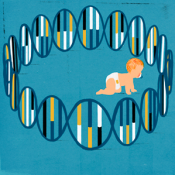Imagine you could select your future child based on likely intelligence. Would you?
By Philip Ball,
Prospect
| 03. 06. 2023
Imagine you’re planning to have a baby and are told there’s a method that can select the embryo to increase, by 2 per cent, the chance of them getting into a top school. Would you use it? A new survey found that more than four in 10 Americans say they would. This study of attitudes towards a technique called preimplantation genetic testing for polygenic risk (PGT-P) shows that there could be a substantial market for it if it is made available for such applications. The technology would not, say bioethicist Michelle N Meyer of Geisinger Health System in Danville, Pennsylvania, and her co-authors, just be adopted by a few “idiosyncratic individuals”, as has sometimes been suggested previously.
Of course, if you’re sensible then you will ask about the small print. How much does the process cost? Is it risky? Since it requires IVF, so that the prospective embryos can be genetically tested before implantation, would you opt for that even if it would not otherwise be necessary to conceive? But the researchers intentionally set a low bar for the 6,823...
Related Articles
By Grace Won, KQED [with CGS' Katie Hasson] | 12.02.2025
In the U.S., it’s illegal to edit genes in human embryos with the intention of creating a genetically engineered baby. But according to the Wall Street Journal, Bay Area startups are focused on just that. It wouldn’t be the first...
Several recent Biopolitical Times posts (1, 2, 3, 4) have called attention to the alarmingly rapid commercialization of “designer baby” technologies: polygenic embryo screening (especially its use to purportedly screen for traits like intelligence), in vitro gametogenesis (lab-made eggs and sperm), and heritable genome editing (also termed embryo editing or reproductive gene editing). Those three, together with artificial wombs, have been dubbed the “Gattaca stack” by Brian Armstrong, CEO of the cryptocurrency company...
By Lucy Tu, The Guardian | 11.05.2025
Beth Schafer lay in a hospital bed, bracing for the birth of her son. The first contractions rippled through her body before she felt remotely ready. She knew, with a mother’s pit-of-the-stomach intuition, that her baby was not ready either...
By Emily Glazer, Katherine Long, Amy Dockser Marcus, The Wall Street Journal | 11.08.2025
For months, a small company in San Francisco has been pursuing a secretive project: the birth of a genetically engineered baby.
Backed by OpenAI chief executive Sam Altman and his husband, along with Coinbase co-founder and CEO Brian Armstrong, the startup—called...




